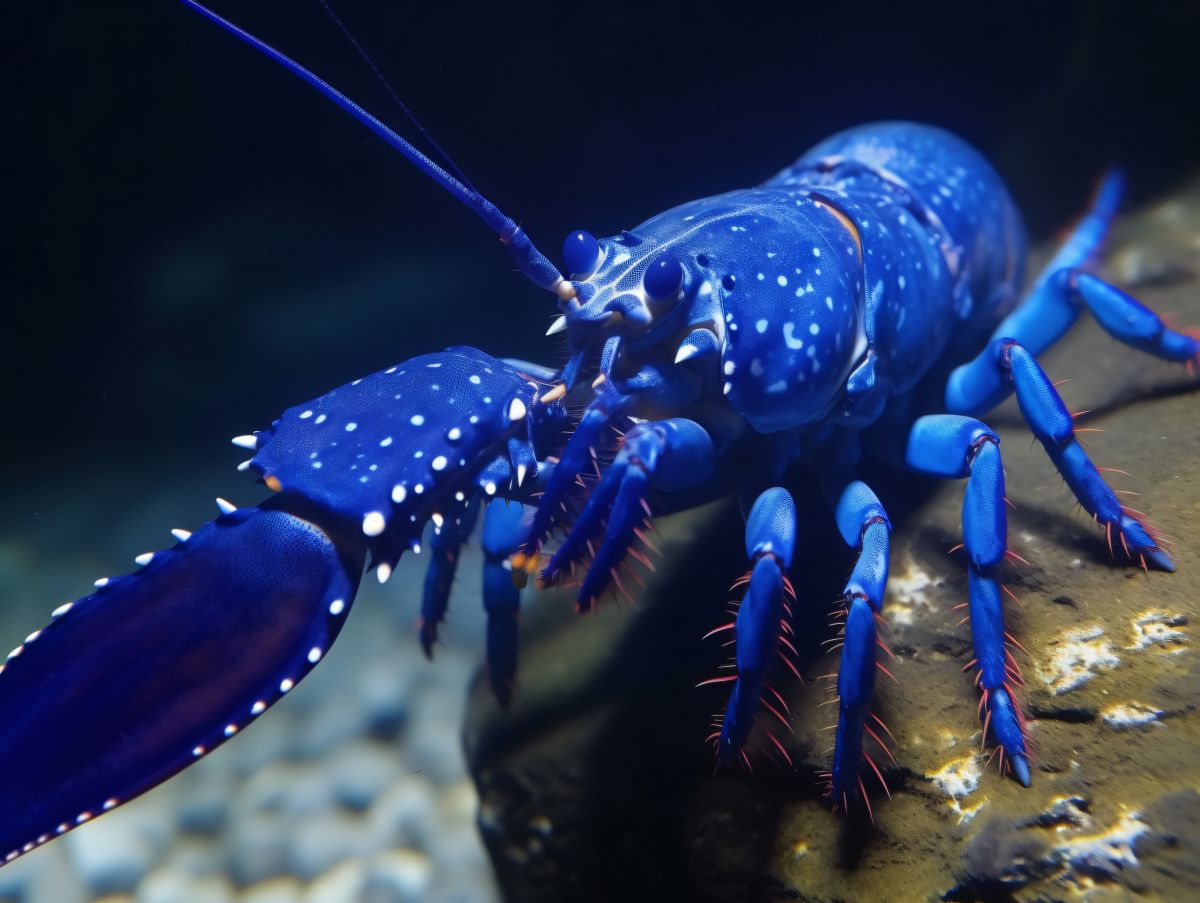
He's not sad, he's just a little blue.
Ask anyone what color a lobster is, and they’ll probably say red. However, before they’ve been cooked, most lobsters are a kind of muddy brown, or even black color. But, every once in a while, you might see a bright blue one. What’s their secret?
Well, all lobsters contain a chemical that comes from the algae and other plants they eat called astaxanthin. This chemical helps lobsters with a variety of functions, such as coping with stress and stimulating their immune system. Astaxanthin is bright red and in fact is the same compound that turns flamingos pink and is related to the compound that makes carrots red! For an unknown reason, lobsters have evolved over time to combine the astaxanthin in their diet with other proteins, creating a compound called crustacyanin which flips the pigment color from red to blue.
In most lobsters, however, there are only so many of these other proteins meaning that only a portion of the astaxanthin undergoes the transformation. This results in the brown and black coloring we typically see in live lobsters. Some lobsters, though, have a genetic mutation that leads to extra proteins. In both cases, the same chemical process is at work, but in the bright blue lobster, there ends up being more crustacyanin.
Even a blue lobster though, would still become red when cooked because of the breakdown of crustacyanin in the cooking process. Scientists say that this happens because crustacyanin proteins change status when exposed to heat causing the crustacyanin and the pigment to separate. This means that any lobster, black, brown, or even blue, will still turn bright red after it’s been cooked.
Further reading:
- Yes, It’s a Lobster, Yes, It’s Blue
- Lobster Color Change Mystery Solved
- On the origin and variation of colors in lobster carapace
Episodes like this:
Reviewers:
John Hellilwell, University of Manchester
Michele Cianci, Università Politecnica delle Marche









